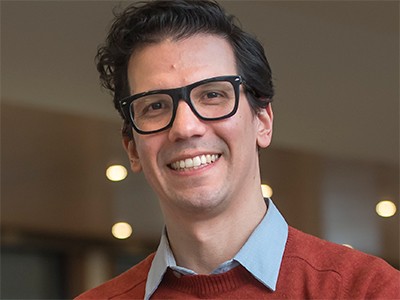In April, the entire editorial boards of two companion neuroimaging journals resigned. The 42 researchers were protesting against what they thought to be excessive article-processing charges (APCs) for authors publishing in the journals, which are run by Dutch publishing giant Elsevier. The APC for NeuroImage is US$3,450, and its sister journal NeuroImage: Reports has doubled its APC to $1,800.
APCs have become an integral part of the revolution in scientific publishing known as open access — the system in which papers are freely available for all to read after publication. Journals such as NeuroImage and thousands of others charge authors APCs to cover publishing costs, such as administration, editing and typesetting. In return, when these papers are published, they are immediately accessible to all. The fees can range from less than $1,000 to more than $10,000 per paper. In some cases authors don’t pay them directly, if their institutions have entered into contracts with publishers that cover the costs of open-access publishing, or if their funders cover the costs.
When publishers first introduced APCs, the expectation was that these fees would be relatively small and a temporary measure that would provide an incentive for publishers to move to open access. “It’s one of those things that looked like a good idea at the time,” says Johan Rooryck, executive director of cOAlition S, a group of research funders and organizations supporting the shift to immediate open-access academic publishing. The coalition developed Plan S, a 2018 agreement originating in Europe, whereby research funders mandate full open access for the work that emerges from their support.

A guide to Plan S: the open-access initiative shaking up science publishing
Now, five years after Plan S was introduced, the shift towards open access is picking up speed as an increasing number of funding bodies throw their weight behind this movement, even if they don’t explicitly join Plan S. Along with the momentum towards open access, concerns about the APC concept have been growing. On 31 October, for example, cOAlition S released a proposal that would reimagine scientific publishing without any author fees.
Critics have a range of complaints about APCs, with some arguing that journals demand exorbitant fees that go well beyond covering their costs and that some publishers are not transparent about what APCs cover. “It’s probably not the right way to finance academic publishing,” says Raym Crow, a managing partner at Chain Bridge Group, a consultancy company specializing in advice on open access in Flint Hill, Virginia.
Another criticism is that APCs perpetuate global inequities. Many publishers offer waivers to APCs especially for authors in lower- and middle-income countries; but some critics argue that this system is unfair because the guidelines for eligibility are often unclear, and in many cases the burden rests with authors to seek out those guidelines.
Several large scientific publishers told Nature that APCs exist to cover the costs associated with publishing, including selecting, reviewing and processing manuscripts, all of which add value to scholarly communications.
A spokesperson for Taylor & Francis, an international publisher based in Abingdon, UK, says it has a transparent approach to calculating APCs and that “they support sustainable models of open access, reflect the value of our services, and ensure we can continue to invest in robust, scalable and flexible infrastructure”.
A Springer Nature spokesperson said: “The APC of Nature and the [Nature-branded] Research Journals reflects the time, investment and value of producing and publishing these journals.” They added that “These journals are also highly selective, which means the journal staff invest considerable time assessing papers that are not ultimately accepted for publication”. (Nature’s news team is editorially independent of its publisher, Springer Nature.)
But as the open-access landscape evolves, various publishing and payment models are emerging in addition to standard APCs, ranging from ones tailored to small communities of researchers, to a major rethinking of funding and research infrastructure so that neither authors nor readers pay.
Shifting payment
Table of Contents
One alternative is a model that keeps APCs but doesn’t pass the charges to authors. Instead, institutions, funders or governments would pay publishers directly. That’s the idea behind Open Research Europe, a no-fee open-access publishing platform for researchers funded by the Horizon Europe programme and others operated by the European Union.
Another example is SCOAP3, a partnership between more than 3,000 libraries, funding agencies and research institutes, administered by CERN, Europe’s particle-physics laboratory near Geneva, Switzerland. Publishers have a contract directly with CERN, and the participating institutions contribute what would otherwise have been subscription fees into a central pot that then covers article-processing costs at participating journals.
Perhaps the most radical, and equitable, of all the publishing models is diamond open access, in which anyone can publish or read articles without fees. That is what the EU council of government ministers and cOAlition S are pushing for across the bloc. It’s unclear whether researchers, funders and institutions will support this plan.

Why I think ending article-processing charges will save open access
In certain areas of the world, it is already a success, says Rooryck. He is enthusiastic about schemes in Latin America, including SciELO (Scientific Electronic Library Online), which started in 1997 and is paid for by state and government funders, such as the São Paulo Research Foundation in Brazil.
Rob Johnson, the founder of consultancy firm Research Consulting in Nottingham, UK, says SciELO provides infrastructure for diamond open-access journals and is extremely successful. The individual journals that are part of SciELO have their own sources of funding, including universities and national agencies.
“To date diamond open access has relied on a decentralized model comprised of multiple small journals which are embedded in the scholarly community. This is both a strength and a weakness,” says Johnson. “The question going forward is really whether diamond open access will receive the financial support needed to allow it to scale and offer a genuine alternative to commercial publishing models.”
Non-profit open-access publisher PLOS, in San Francisco, California, is experimenting with some non-APC ways of publishing. “What we’ve been trying to do is purposefully move away from them and trial different models to support some of our portfolio journals,” says Roheena Anand, executive director of global publishing development at PLOS in Cambridge, UK.
One is called community action publishing (CAP). “This model aims to demonstrate that we do not need to charge high APCs in order to sustain a highly selective journal. It’s based on the principle of collective action,” says John Edwards, a publisher for funders and institutions at PLOS in London.
The CAP model sets fixed annual fees for institutions based on the publishing activity of all authors named on a paper — not just corresponding authors — and gives their academics unlimited chances to publish in three PLOS journals. This type of agreement covers a minority of PLOS authors; the majority still pay APCs. PLOS Sustainability and Transformation, launched in 2022, is entirely funded through the CAP model, which includes a provision for authors at non-participating institutions to pay a contributing fee.
Another model PLOS is trialling is called global equity. In that plan, individual institutions pay a flat fee and their researchers can then publish in specific PLOS journals, with annual fees on a sliding scale depending on the circumstances of each subscribing institution.
Some organizations are shifting to other models of publishing. In June, the American Society for Microbiology (ASM) announced a move to Subscribe to Open publishing for all of its six subscription journals. Each year a journal’s content becomes open access if subscriptions to it reach a minimum target.
This sort of approach can work in areas of research that are well established, or have a close-knit community, suggests Johnson. He points to the SCOAP3 partnership in the field of high-energy physics as an example. “There’s quite a clearly defined community and it’s a well-funded community,” says Johnson.
Green options
Some journals maintain paywalls for their articles and support what’s called green open access, by allowing authors to immediately share peer-reviewed manuscripts. This is the model used by the journal Science, which is financed in part by membership fees for its publisher, the American Association for the Advancement of Science.

EU council’s ‘no pay’ publishing model draws mixed response
In September, the American Chemical Society (ACS) announced a variation on this green open-access theme. The society offers this to authors who need to comply with a policy to make their peer-reviewed work immediately available — but who don’t have APCs paid for them by institutions or funders under agreement with ACS. The fee charged to authors covers the costs that ACS says are associated with a manuscript from when it is submitted through to the final editorial decision. These article development charges (ADCs), which include organizing peer review, comprise more than 50% of the overall cost of publishing, says Sarah Tegen, senior vice-president and chief publishing officer at ACS in Washington DC.
However, this idea has proved controversial. In a statement on 9 October, the Council of Australian University Librarians expressed “serious concerns”, one of which is that the ACS is charging researchers twice: authors pay ADCs and subscribers then pay to access papers behind a paywall.
In response, ACS says that, “There is no point at which ACS Publications charges for the same services twice.”
The debates over APCs are part of a broader discussion about how to shift scientific publishing towards greater openness. But publishers say some calls for reform overlook important services that they provide.
“There’s a widespread misunderstanding of the extensive and complex infrastructure that publishers maintain,” says Caroline Sutton, the chief executive of STM, a membership organization for the academic publishing industry headquartered in The Hague, the Netherlands. “This infrastructure plays a vital role in ensuring the trustworthiness as well as the proper archiving and discoverability of research.”
